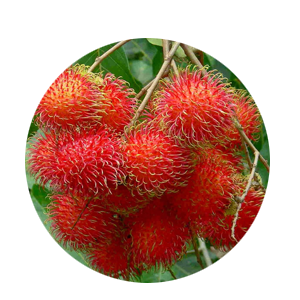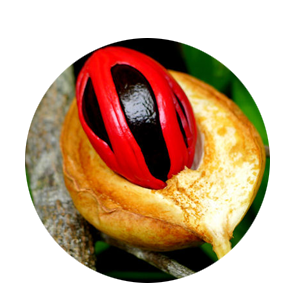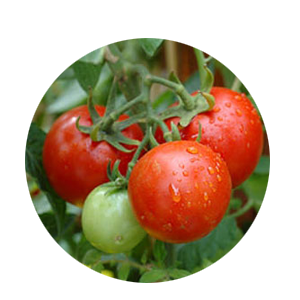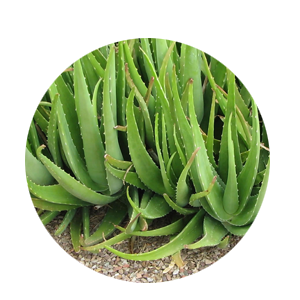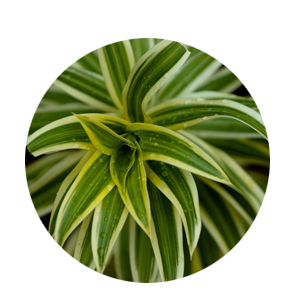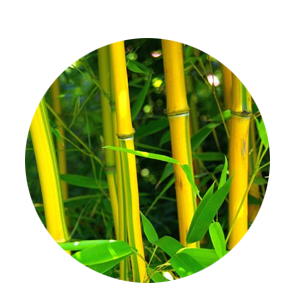Kudampuli -Grafted - (8x10 bag)

Item Description
GENERAL INFORMATION ABOUT A MALABAR TAMARIND Kudampuli – Garcinia cambogia is commonly known as “Malabar Tamarind”. Garcinia cambogia trees are found in the tropical countries. They belong to the family Guttiferae. Malabar Tamarind is a fruit-bearing plant native to the southern portions of Asia and Asia Oceania. kudampuli is a small or medium sized tree with rounded crown and horizontal or drooping branches. Leaves are dark green and shining, elliptic obovate, 2-7 cm long and 2 – 4 cm broad. The fruit, which is 4 – 5cm in diameter is green in colour changes to yellow or red when ripe and resembles a small pumpkin. It has deep longitudinal grooves (6-8) and 6 to 8 seeds.Surrounded by a succulent aril . In the Indian Ayurvedic system these types of fruits having sour taste are said to promote digestion. Apart from these uses in food preparations and preservation, the fruit juice possesses anti-scorbutic, anthelmintic and cardiotonic properties. Hence it finds application in the treatment of piles,dysentery, tumors, pains and heart complaints . HEALTH BENEFITS OF MALABAR TAMARIND Garcinia cambogia is an exotic fruit, which is popularly used in the food industries, besides this is also very effective in the treatment of various diseases and disorders such as edema (accumulation of fluid in the body), constipation, piles, rheumatism, intestinal parasites irregular menstruation, cancer and high lipid levels. Different plant parts of garcinia cambogia contain different health promoting compounds. Such composition makes it extremely healthy and useful in the treatment of various ailments. Garcinia Cambogia for Weight Loss It is found that garcinia cambogia plays a very important role in weight loss. It has been widely used as an anti-obesity or weight loss supplement since decades. Type 2 Diabetes Mellitus Very few studies have found an effective role of garcinia cambogia on type 2 diabetes mellitusstudy showed that garcinia cambogia had an indirect effect on plasma glucose levels. Treatment with 3.3% of garcinia cambogia extract improved glucose metabolism and increased the uptake of glucose by cells. High Cholesterol Many scientific studies have found that garcinia cambogia works on reducing high cholesterol and triglyceride levelsCholesterol is required for the synthesis of bile acid. Garcinia cambogia extract increases the excretion of bile acid. Thus, more cholesterol will be required for the formation of bile acid. Such a continuous cycle of bile acid excretion, reduces the level of cholesterol in the body. Antiulcer Properties Garcinia cambogia is very effective in the treatment of gastrointestinal disorders. It soothes the inner lining of the gastrointestinal tract and reduces the inflammation. Other Uses 1. Sun-dried smoked rind of garcinia cambogia is very popular as a spice condiment and is widely used in fish curries. 2. Dried rind of garcinia cambogia fruit when combined with salt can be used to treat fish. This combination is mainly used in India and Sri Lanka. Its dried rind kills the bacteria and thus, improves the shelf life of fish. 3. It is also used as a bulking agent, which makes the meals more filling, and thus, reduces hunger pangs. 4. Due to its high vitamin C content, a tonic is prepared out of garcinia cambogia fruits, which helps to prevent heart diseases. 5. Rind of garcinia cambogia fruit can be used in curries instead of tamarind and lemon. 6. Garcinia cambogia extract is very commonly used in the form of pills for weight loss. 7. Garcinia cambogia extract is also used in the powdered form. 8. Decoction of rind is given during bowel complaints. In summary, it can be stated that garcinia cambogia is effective in reducing body weight and body fat. Besides this it is also effective is lowering the level of plasma glucose level, cholesterol level as well as triglyceride levels. Treatment with garcinia cambogia combats oxidative stress and drops the level of inflammation. All these benefits of garcinia cambogia are due to the presence of an active compound in it called ‘hydroxycitric acid’.
Maintanance, Disease Management And Yielding
MAINTANACE OF THE PLANTATION Once a plantation has been established, the work should not be considered finished. It will be necessary, for example, to protect the plantation against weather, fire, insects and fungi, and animals. A variety of cultural treatments also may be required to meet the purpose of the plantation. FERTILIZING Apply 10 kg cattle manure or compost per seedling / graft during the first year. Gradually increase the quantity so that a well-grown tree of 15 years and above receives 50 kg of organic manure per year. Apply N:P2O5:K2O mixture at the rate of 20:18:50 g/plant during the first year. Double the dose in the second year and gradually increase it to 500:250:1000 g / plant / year at the 15th year. WATERING AND WEED CONTROL Young Malabar Tamarind trees should be watered regularly until fully established. In dry western climates, water mature trees deeply at least every one or two weeks. Desert gardeners may have to water more frequently. Mulch the soil around the trees to conserve moisture. Weeding is also very important. Remove all weeds 1.5 meter around the plant. PRUNING AND SHAPE OF TREE Little pruning is required apart from removing overlapping or dead branches or to limit tree size for easier harvesting and spraying. PEST & DISEASE Every fruit tree has the future potential for disease and insect damage. Factors such as location and weather will play a part in which issues your tree encounters. If available, disease-resistant trees are the best option for easy care; and for all trees, proper maintenance (such as watering, fertilizing, pruning, spraying, weeding, and fall cleanup) can help keep most insects and diseases at bay. HARVESTING YOUR MALABAR TAMARIND TREE Seedlings start bearing generally at the age of 10-12 years. Grafts start bearing from the third year onwards and will attain full bearing at the age of 12 to 15 years. Flowering occurs in January-March and fruits mature in July.Mature fruits, which are orange yellow in colour, drop off from the tree. Harvest mature fruits manually before they fall. Immediately after harvest, wash the fruits in running water and separate the fruit rind for process.
- Propogation Method : Grafting
- Plant Climate : Sub Tropical, Normal, Cool, Tropical
- Plant Height : 1-2 feet
- Plant Weight : 3.5kg
- Plant Polybagsize : 8x10
Related Images
- Botanical Name : Garcinia gummi-Gutta
- Malayalam Name : Kudampuli
- English Name : Malabal Tumerind/ Brindleberry
A Natural Anti-oxidant and an effective catalyst for weight loss
Planting Instructions
PLANT THE RIGHT TREE AT RIGHT PLACE Growing space both above and below ground should be considered when selecting a tree to plant. Too often allowances are not made for the increased size of the tree when it matures. Most problems can be avoided by selecting the proper tree species for the available planting space. GENERAL TIPS 1. Plant at least 3 meter from main overhead utility wires on street or to your home. 2. Plant at least 3 meter from a building. 3. Plant at leat 1 meter from sidewalks, driveways, patios and fences. 4. Plant at least 6 meter from other large trees. 5. Plant at least 3 meter from small trees. 6. Prioritize your tree planting with the sun’s direction to maximize shade by planting on the southwestern and western sides of your home BASIC PARAMETERS TO PLANT A MALABAR TAMARIND TREE 1.Soil :It grows well in dry or occasionally water logged or flooded soils. 2.Planting Distance : For Commercial Plantation:- The planting distance of 7 meter x 7 meter is recommended For Home Garden:-In a home garden generally we are planting one or two Malabar Tamarind trees along with other species of fruit plants. So it is better to keep minimum 3 meter distance from other plants to plant a Malabar Tamarind tree. 3. Pit size : Minimum 60cm width X 60cm Breadth X 60cm depth 4. Sunlight : 100% sunlight is best but can grow up to 50 % shade 5. Watering: During dry weather, initially water the plant once in two days and after one month of planting water every 7 to 10 days during the first year. TEN TIPS FOR PLANTING A MALABAR TAMARIND TREE 1. Dig a hole/pit 3 to 4 times wider than the container (Normally 60cm X 60cm X 60cm is recommended). Fill the pit with top fertile soil to allow for proper root growth. Avoid clay type soil to refill the pit. 2. Add 250 gm Rock Phosphate or Born Meal and 3 to 5 kg Cow dung or compost in the top soil of the pit and mix it thoroughly (Thorough mixing of manure with soil is very important because direct contact of manure with the roots of the plant will cause the damage of roots and plant). 3. Make a small hole in the pit and carefully remove the plant from the container/pot or poly bag keeping the soil around the roots intact. Don‘t yank the plant out of the pot or poly bag as this can separate the roots from the tree. Poly bags can be easily removed by cutting it by a knife and pots can be removed easily by hitting slightly at the top edge of the pot. 4. Set the plant in the middle of the hole. Avoid planting the tree too deep. Keep the base of the trunk is slightly above ground level. Using some soil, secure the tree in a straight position, then fill and firmly pack the hole with the original soil, making sure there aren‘t any air pockets. 5. If the plant is Grafted or Budded make sure the grafted or budded portion of the plant is above the soil. Do not allow to touch the grafted or budded portion in the soil as it burns the skin of the plant. 6. Create a water-holding basin around the pit and give the plant a good watering. After the water has soaked in, spread protective mulch 2–4 inches deep in a 3-foot diameter area around the base of the tree, but not touching the trunk. Also provide a stich as a support for the plant, if needed. 7. The soil and mulch around your plant should be kept moist but not soggy. During dry weather, initially water the plant once in two days and after one month of planting water every 7 to 10 days during the first year. 8. Remove any tags and labels from the tree as these will affect the tree as it grows. You may need to prune any broken or dead branches. For Budded or Grafted plants it is very important that do not allow the growth of off shoots under the grafted/budded portion. Allow the growth of budded/grafted scions only. 9. Do not use chemical fertilizer or any other chemicals on your newly planted trees. Such products will kill your young trees. If needed you can add chemical fertilizers in small quantity (generally below 100gm) after two to three months of planting with sufficient irrigation. 10.Do not over water or allow rain water so much that you see standing water in the pit area of the plant. It will damage the plants roots and results the die of your plant.










